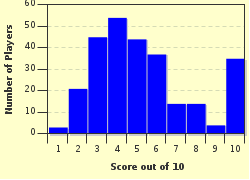Quiz Answer Key and Fun Facts
1. The segregated communities forced upon the Jews in Warsaw (and throughout Poland) had been in existence since what historical period?
2. The segregated communities inhabited by Jews in Polish cities became known as:
3. By November of 1940 when the area was sealed, how many residents are estimated to have lived in the Jewish Quarter in Warsaw?
4. Jewish communities that had more than 10,000 inhabitants were allowed by the Nazis to form twelve member Jewish Councils. What was such a council called?
5. In Warsaw the busiest smuggling area for the poor was the:
6. Which activities were forced to cease in the Jewish Quarter of Warsaw after the Nazi invasion?
7. Which of these services did the TOZ provide?
8. In 1941 who suggsted that extermination of the Warsaw Jews might be more humane than starvation?
9. When was the Jewish Fighting Organization established?
10. In the summer of 1941 the Nazis decided to deport the Jews in Poland to one of six areas. To which of these camps was the majority of the Warsaw Jews sent?
Source: Author
ponycargirl
This quiz was reviewed by FunTrivia editor
bloomsby before going online.
Any errors found in FunTrivia content are routinely corrected through our feedback system.

